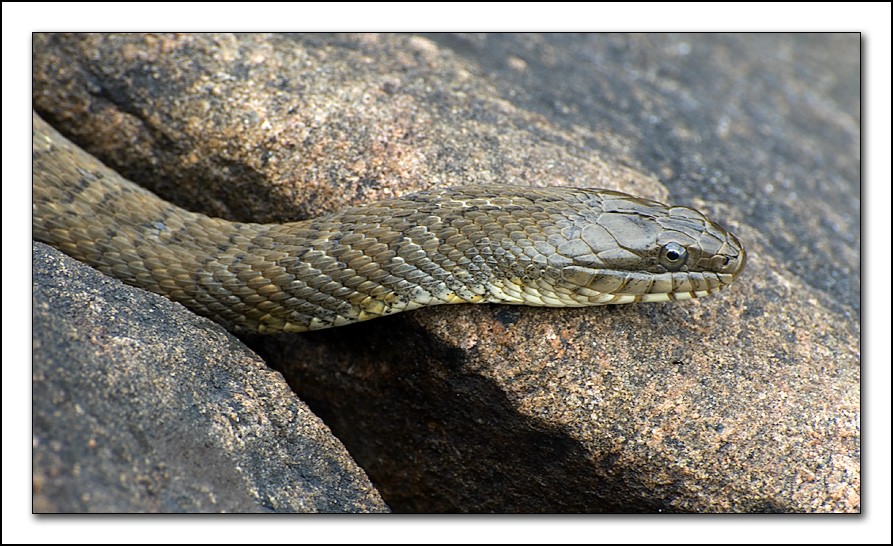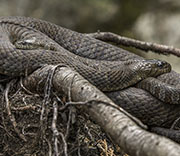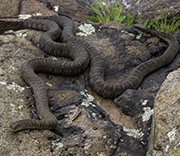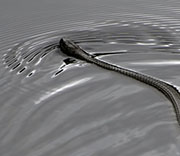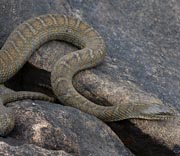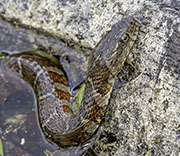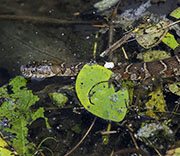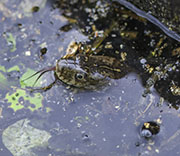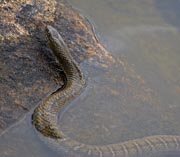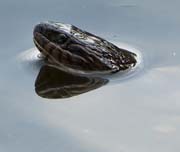Northern Watersnake
Northern Watersnake (Nerodia sipedon sipedon)
As the name suggests, the Northern Watersnake is usually seen in or near water. It is a moderately large Brown snake that is dark brown with faint reddish brown crossbands and blotches. The older ones appear to be darker than the younger snakes.
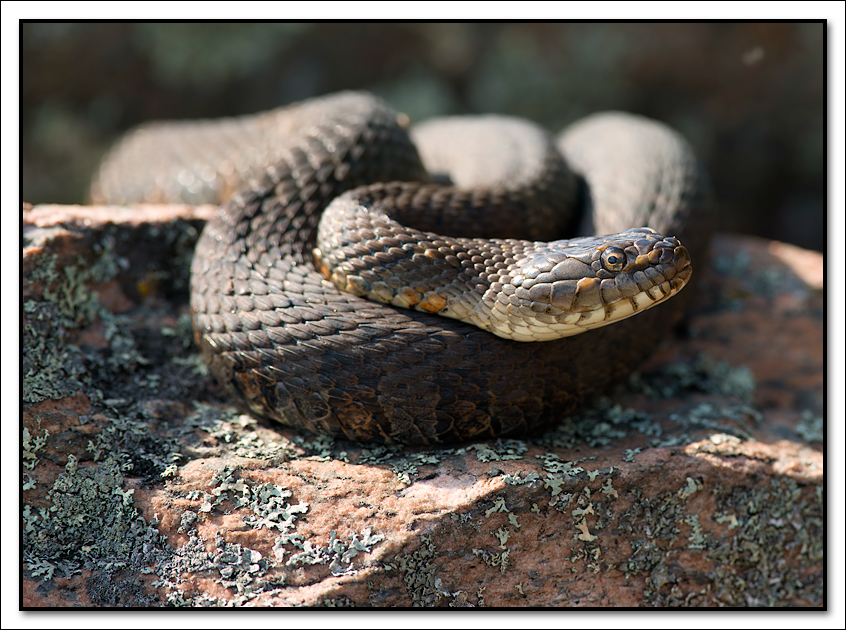
The northern watersnake can be found in and around almost any permanent body of fresh water within its range, including lakes, rivers, streams, sloughs, ponds, bogs, swamps and marshes. They prefer fairly sunny locations with good cover and basking sites. This would include overhanging shrubbery, cattails, old beaver lodges, rock piles and fallen logs.
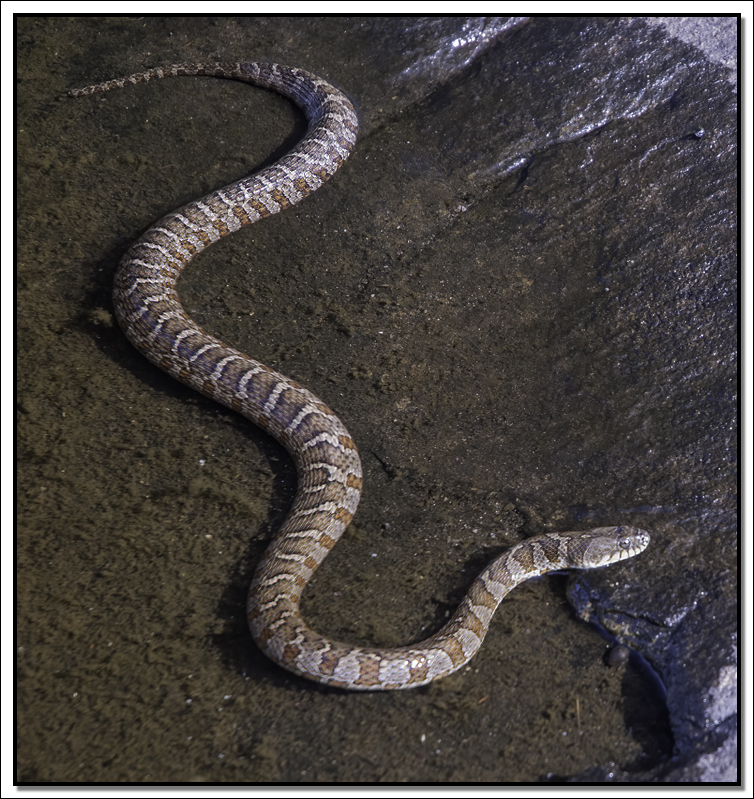
Watersnakes eat mostly cold-blooded prey like fish, frogs, tadpoles, salamanders, insects and worms. Watersnakes are preyed upon by larger fish, Bullfrogs, Snapping Turtles, larger snakes, hawks, herons, raccoons, skunks, mink and otters. Humans are a serious enemy as well in some places. People often kill out of fear or ignorance. The Northern watersnake will try to escape from potential attackers when possible, but the can aggressively defend itself, when necessary. There are harmless if left alone.
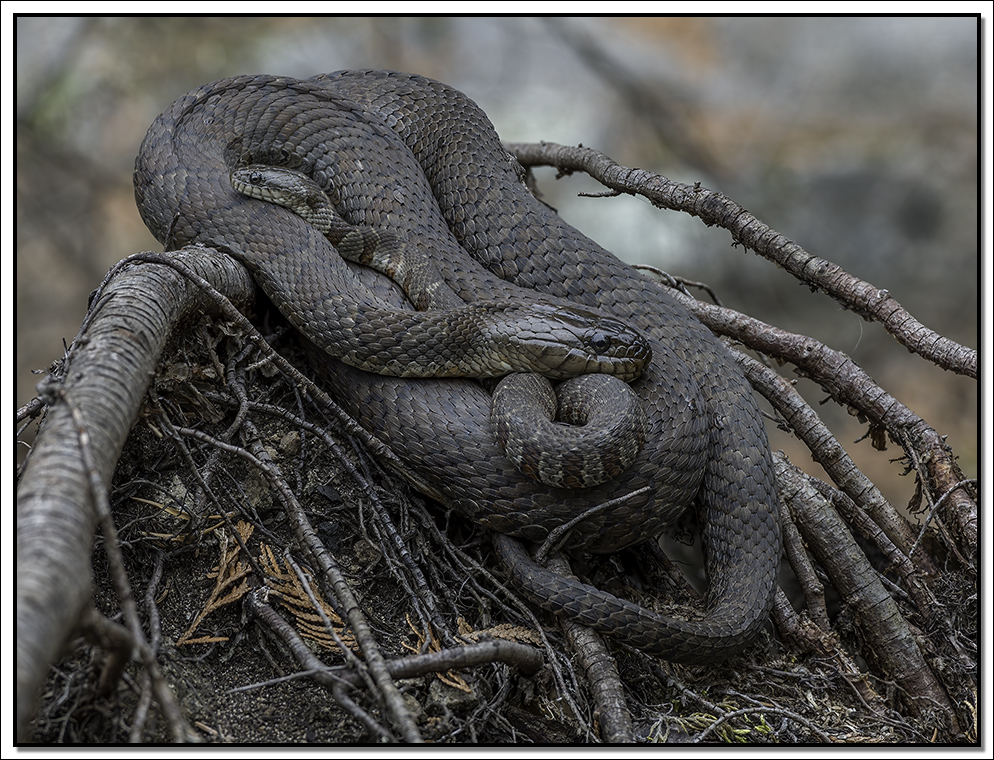
Female Northern watersnake are larger than the males. They breed in the spring after emerging from hibernation. Females give birth to live young in late summer or early autumn. The size of the hatchlings is related to the mother’s size but averages about 18 centimetres. In Canada, these snakes reach maturity in three to four years.
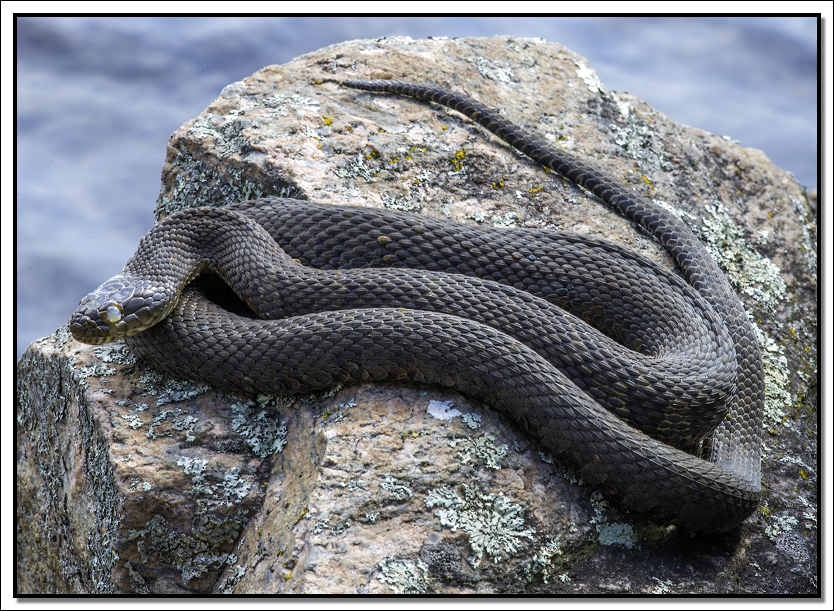
All snakes shed there skin as they grow. The entire process could take several days to complete. Snakes have no eyelids. Instead they have clear scales over their eyes. When they are shedding their skin, their eyes become cloudy and bluish and can effect their vision during this time.
